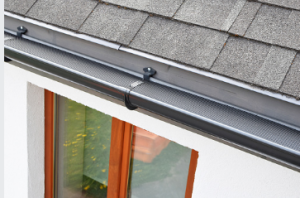Consider installing a DIY gutter guard if you want to protect your home’s exterior from water damage. Gutter guards can help dry out standing water and debris and even promote air circulation through your gutter system.
Foam inserts
 Foam inserts are a great way to cover your gutters without breaking the bank. These foam strips or wedges fit into your channel and stop leaves and other debris from entering. They are available in a variety of sizes and can even be cut with a pair of scissors.
Foam inserts are a great way to cover your gutters without breaking the bank. These foam strips or wedges fit into your channel and stop leaves and other debris from entering. They are available in a variety of sizes and can even be cut with a pair of scissors.
While foam is the standard material for gutter guards, there are also mesh panels. Like the foam inserts, these will keep the elements out of your gutters, but the mesh panel is more effective at preventing debris from entering the system.
Foam gutter guards are easy to install and come in various shapes and sizes. The best option, however, is a half-round gutter guard. It is because the flat-style guards are virtually invisible from the ground.
Vinyl gutter guards
If you’re looking for vinyl gutter guards, you should know several options are available. Consider durability, maintenance, visibility, and price to choose the best one.
A micro-mesh guard is a perfect choice for a home with large trees. The mesh material makes it easier to clean your gutters. Moreover, it prevents mould and rust.
Besides keeping leaves, pine needles, and oak tassels out of your gutters, micro-mesh guards are an excellent way to save money on leaf cleaning. They are also easy to install.
Foam inserts are another great option. These are cut and shaped inside the gutters to keep large debris out. However, they require regular cleaning.
Another option is to use screens. However, while they are cheaper, they can cause more problems. In addition, this type of DIY gutter guard is not as strong as aluminium and is not as maintenance-free as foam inserts.
Mesh guards
Mesh gutter guards are considered one of the best types of gutter protection. They are also easy to install. You can attach them to your fascia, the transition trim between your roof and gutters. It will help to keep your gutters free of leaves, branches, twigs, and other debris.
Mesh gutter guards are usually made of metal, such as stainless steel. Some are even made of copper. While this material is durable, it is also expensive. To keep the cost down, you can opt for plastic. However, plastic does not have the same strength as steel. Therefore, this might not be a good choice if you live in a harsh environment.
When installing mesh guards, you must ensure that your gutter system is the correct size for the guard. If it’s too big, it could cause problems. Similarly, if it’s too small, it won’t be able to block debris effectively.
Reverse curve gutter guards
A reverse curve gutter guard is a type of guard that is installed on top of the existing gutters. It helps prevent water from entering your gutters and causing damage to your home.
Reverse curve gutter guards force water to travel along a downward curve. They are not a permanent solution and should be removed periodically. In addition, they can help to minimize ice dams. However, they are not ideal for areas with heavy rain or where leaves and organic matter will be caught.
Reverse curve guards are commonly available in metal or plastic. In addition, some models have a heated option to help prevent ice from forming in cold weather.
Reverse curve guards are usually installed by a professional. However, depending on the model, the installation process may be more complex than the average homeowner can handle.
DIY gutter guard installation
If you want to save money and improve your gutter system simultaneously, you may want to consider a DIY gutter guard installation. But before you jump into the task, you should know some pitfalls and the best methods for getting the job done right.
Gutter guards are a great way to protect your home from water damage caused by clogged gutters. They also prevent the buildup of debris, which can impede water flow. Without them, you may have to pay a professional to clean and repair your gutters.
In addition to a sturdy ladder, you’ll need some essential tools and protective gear. Wear safety glasses and get a buddy to help steady the ladder.
Using a bucket with an S-hook to hold tools and supplies is a good idea. It allows you to keep two hands on the project and minimizes the likelihood of accidents.